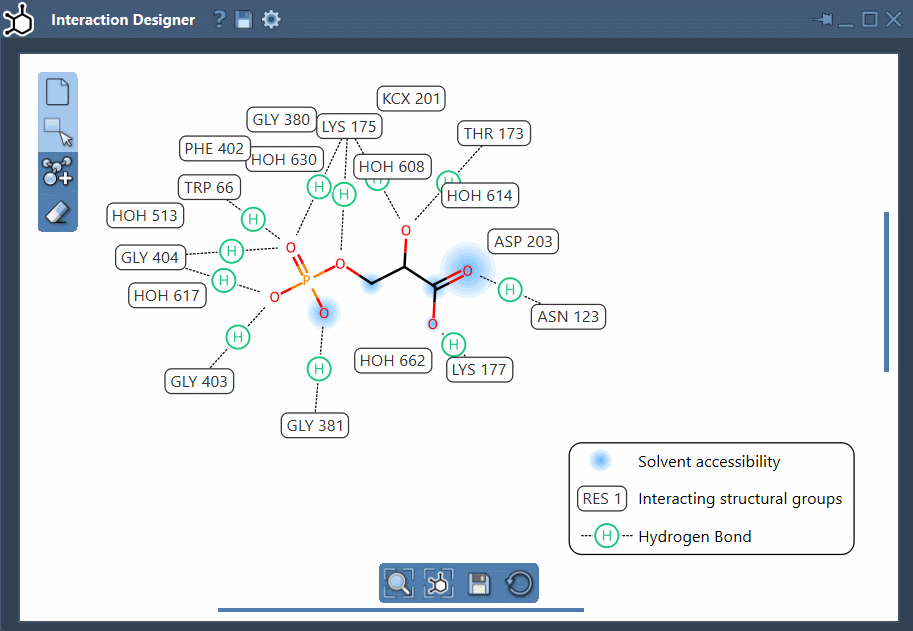For molecular modelers working on protein-ligand complexes, deciphering complex interaction patterns can be challenging, especially when navigating dense 3D environments. Identifying hydrogen bonds, hydrophobic contacts, and clashes visually in 3D often requires substantial effort—and sometimes even multiple tools.
The Interaction Designer in SAMSON offers a helpful alternative: a synchronized 2D–3D environment that can automatically generate clear, editable 2D interaction diagrams of molecular structures. With just a couple of clicks, you can generate diagrams that highlight interatomic contacts within binding pockets, residue-level interactions, and solvent-accessible regions—all tightly integrated with your 3D workspace.
Why 2D Interaction Diagrams Help
Seeing structure-function relationships in molecules often benefits from simplified visuals. A clean 2D diagram can quickly highlight:
- Hydrogen bonds and salt bridges between a ligand and its protein target
- Steric clashes or van der Waals conflicts that may hinder binding
- Solvent accessibility for ligand atoms
- Interactions by type, including halogen bonds, aromatic stacking, ionic contacts, and more
This versatility makes 2D interaction diagrams ideal for communication in publications, presentations, student projects, or for your own structural analysis workflow.
How It Works
Simply select a ligand, a binding site, or any atoms of interest, and then use the Home > Diagram button inside the Interaction Designer. Not only does it place residues and atoms in an intelligible 2D layout, it also connects interactions with color-coded symbols and detailed legends.

Advanced features include:
- Zoom and focus: Click to select or double-click to zoom on specific atoms or fragments in 2D/3D.
- Custom layout: Manually drag labels and interaction arrows for publication-ready clarity.
- Legend control: Click interaction types in the legend to hide/show them. Double-click to change their display color.
- Synchronized edits: Add or remove fragments in either 2D or 3D, and both views stay aligned.

Exporting for Your Work
Once your diagram fits your needs, export it using the save button in the bottom panel. Supported formats include PNG, JPG, BMP, and even SVG for vector-based flexibility.
With this approach, understanding—and communicating—protein-ligand interactions gets easier and more precise.
To learn more and explore other related features like building new molecules or using interaction fragments, visit the full Interaction Designer Documentation.
SAMSON and all SAMSON Extensions are free for non-commercial use. Get SAMSON at https://www.samson-connect.net.





